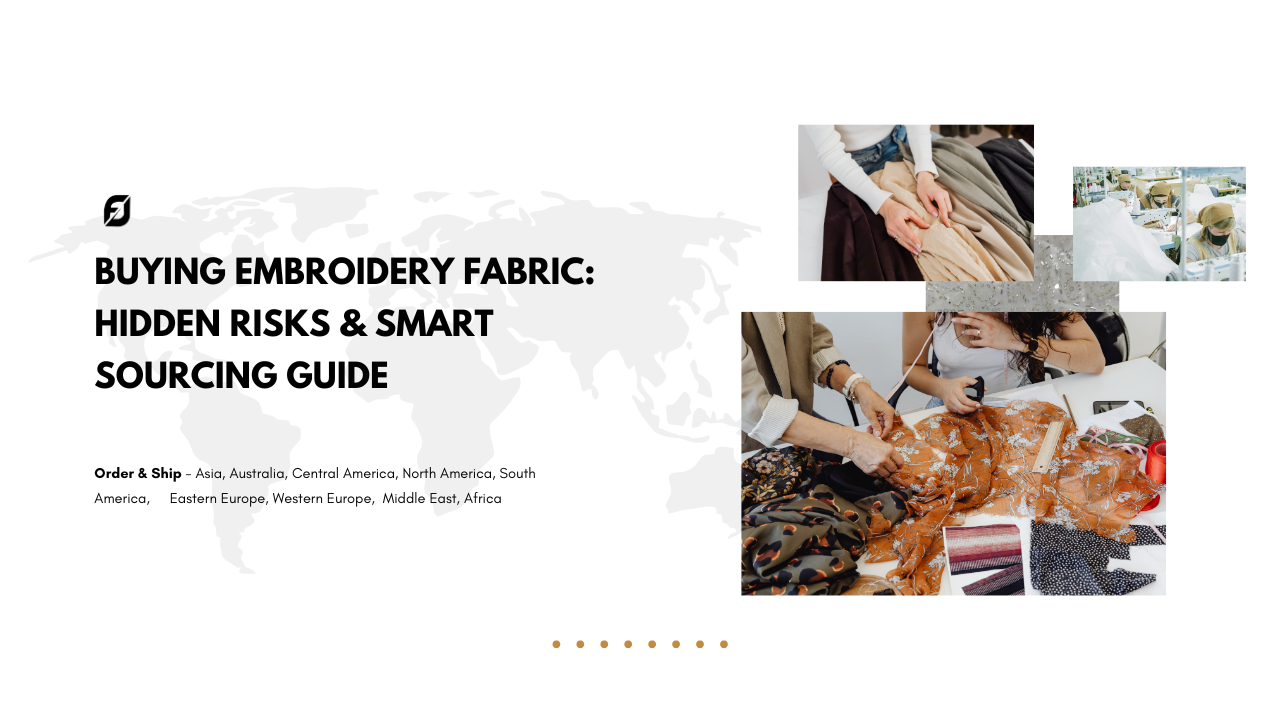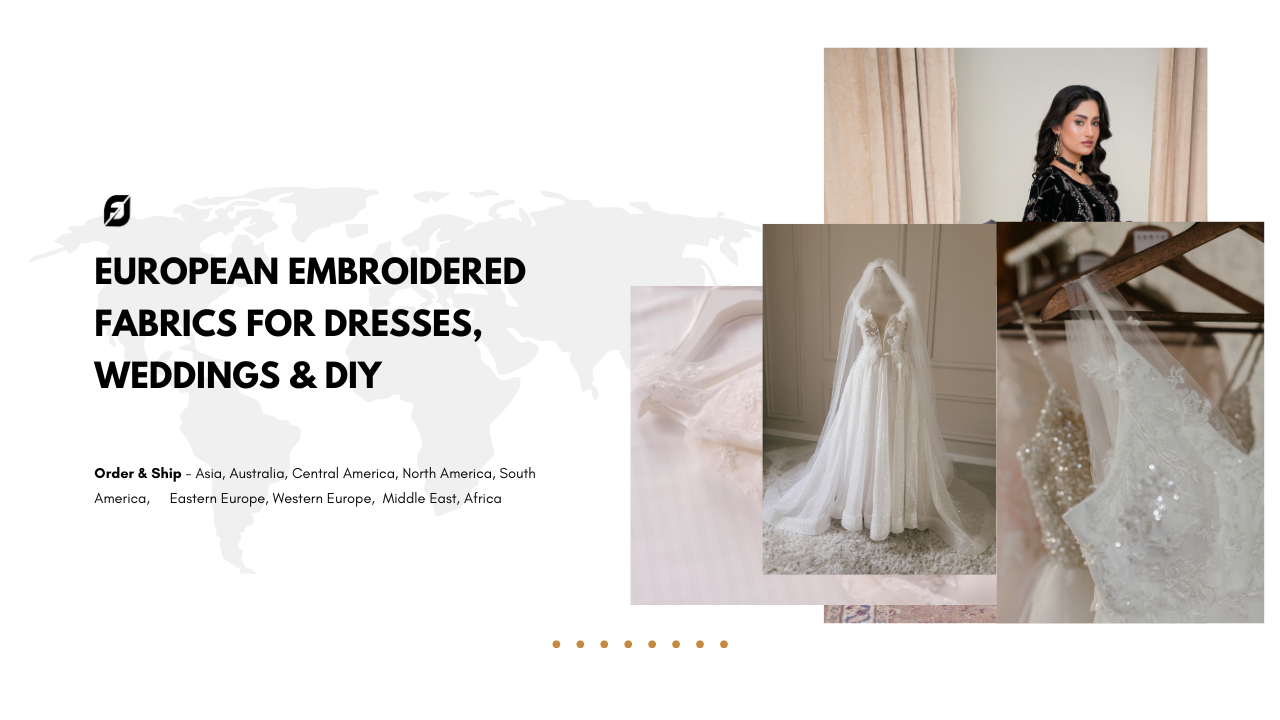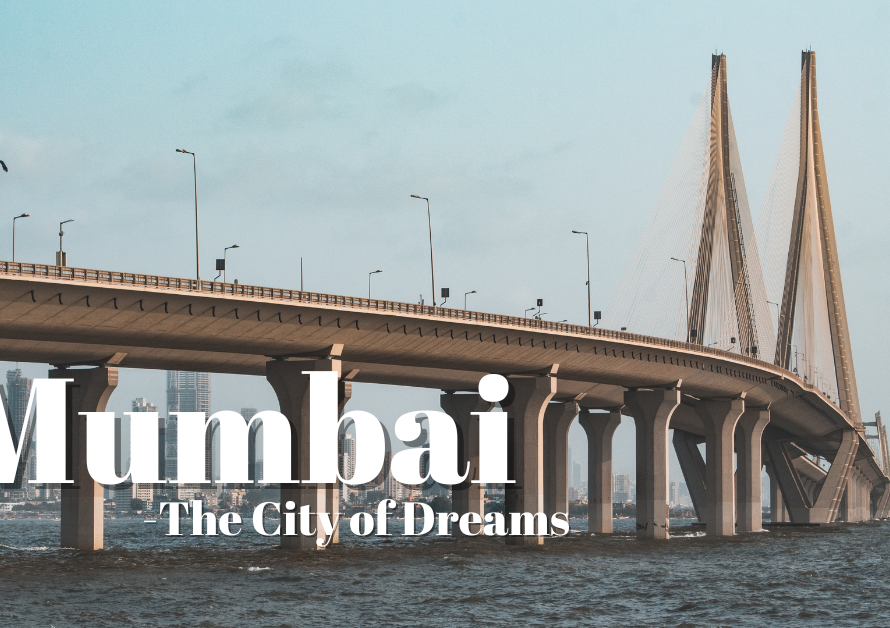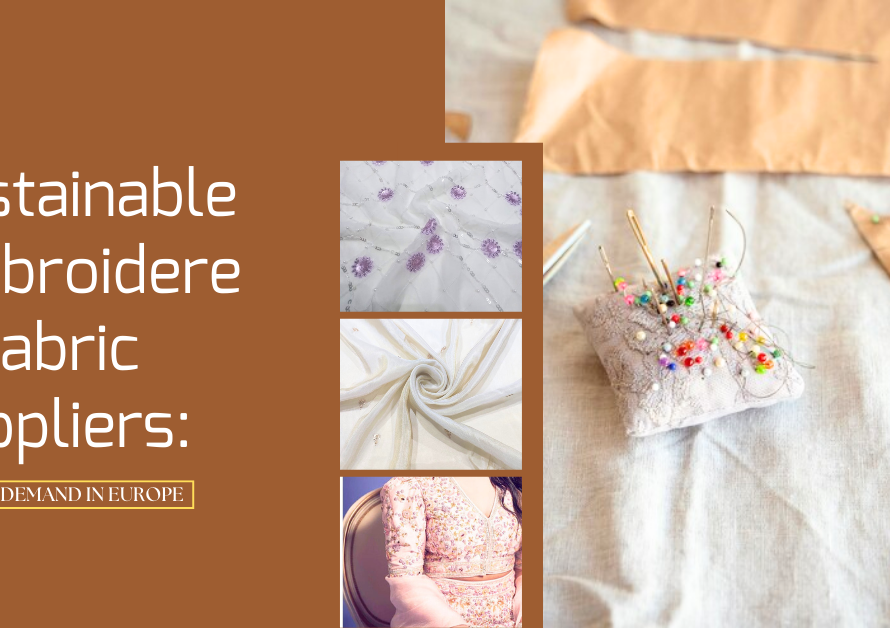The fashion industry has always thrived on innovation, storytelling, and craftsmanship. From intricate embroidery in Mughal courts to digitally engineered haute couture gowns in Paris, textiles have served as both cultural symbols and commercial drivers. In today’s world, Premium position print fabrics and embroidered print fabrics stand out as transformative categories. Unlike all-over prints, these fabrics are carefully engineered to place motifs, borders, or embellishments in precise areas of a garment, creating striking designs that balance tradition and modernity.
As consumers shift toward sustainability, exclusivity, and artisanal value, position print and embroidered fabrics have gained global recognition. In this article, we explore their history, design process, global market impact, and how FabricDiary by Madhav Fashion is redefining sourcing for designers, merchandisers, and brands worldwide.
Premium Position Print & Embroidered Fabrics: European Trends and Global Impact – FabricDiary by Madhav Fashion
History & Evolution of Premium Position Print and Embroidered Fabrics
Ancient Textile Traditions
- India & Asia: Traditional saris, dupattas, and kimonos often placed motifs at borders or pallu sections. This was the earliest form of “position printing” without modern technology.
- Middle East: Kaftans and ceremonial robes integrated hand embroidery in specific sections to symbolize status and spirituality.
European Renaissance Influence
- During the Renaissance, embroidery evolved as a status marker in royal courts. Hand-placed motifs and borders were key features of gowns and coats.
- Italian and French couture designers elevated embroidery to art, fusing it with carefully positioned woven motifs.
Industrial Revolution & Mass Production
- The 19th century brought rotary printing and machine embroidery. This democratized fabric design, but placement precision was still limited.
- Fashion houses in Europe and Japan began experimenting with manual alignment techniques for panels and prints.
Digital Transformation
- With CAD (Computer-Aided Design) and 3D garment mapping, precise position printing became scalable.
- Designers could visualize how a motif would sit on a sleeve, hemline, or neckline before printing began.
- This marked the beginning of today’s Premium Position Print Fabrics, offering both creativity and technical perfection.
What Makes Premium Position Print Fabrics Unique?
- Precision Placement Unlike repeat prints, position prints are designed for specific garment sections—like a centered motif on a kurta or a floral burst across a gown bodice.
- Bold Visual Impact These fabrics create statement looks with less clutter, making them popular among global designers.
- Garment-Centric Design Instead of printing yardage, these fabrics are engineered with final garment silhouettes in mind.
- Value Addition Position printing minimizes wastage, reduces excess dye use, and ensures premium pricing.
Embroidered Print Fabrics: Craft Meets Technology
Embroidered print fabrics combine the vibrancy of digital printing with the finesse of traditional embroidery.
- Base Layer: Digitally printed motifs, florals, or geometrics.
- Overlay: Hand or machine embroidery with resham, zari, sequins, or beads.
- Result: A multi-dimensional textile that balances modern aesthetics with cultural heritage.
Examples in Global Fashion
- Paris & Milan Fashion Weeks: Designers like Dior and Dolce & Gabbana use placement embroidery to elevate couture gowns.
- South Asia: Indian bridal lehengas and Pakistani formal wear showcase rich combinations of embroidery and placement prints.
- Middle East: Luxurious abayas and kaftans integrate embroidered panels for ceremonial wear.
Global Market Trends and Demand
Europe
- Position print fabrics dominate couture and luxury markets.
- Increasing demand for eco-conscious textiles aligns with sustainable printing methods.
Middle East & Africa
- High demand for ornate embroidered prints in abayas, kaftans, and cultural wear.
- Africa embraces bold placement prints in fusion with local patterns.
North America
- Growing popularity in red-carpet couture and boutique labels.
- Bridal designers increasingly adopt embroidered prints for gowns.
Asia-Pacific
- India, Pakistan, and Bangladesh → traditional bridal wear markets.
- Japan & Korea → fusion streetwear with placement motifs.
Statista & McKinsey reports indicate that luxury textile demand is growing at 6.3% CAGR globally, with embroidered and premium fabrics being key drivers.
Sustainability and the Future of Position Print Fabrics
- Eco-Printing: Uses less ink, fewer dyes, and generates minimal wastage.
- Longevity: Higher garment value means consumers buy less, reducing fast fashion waste.
- AI & Automation: Emerging tech will allow even more accurate garment-based positioning.
- Consumer Shift: Gen Z and Millennials increasingly prefer sustainable, premium fabrics over mass-produced fast fashion.
Case Study: FabricDiary by Madhav Fashion
FabricDiary, powered by Madhav Fashion, represents a factory-direct sourcing platform that delivers only in-house manufactured fabrics.
- Authenticity: Every fabric is created in Madhav Fashion’s own production facilities.
- Exclusivity: Unlike wholesale portals, FabricDiary offers curated, premium collections unavailable elsewhere.
- Global Reach: Export-ready for 195+ countries, catering to designers, merchandisers, and boutique owners.
- Sustainability: Madhav Fashion emphasizes eco-friendly dyeing, water conservation, and reduced wastage.
This direct-to-designer model ensures both quality and transparency, positioning FabricDiary as a trusted global partner.
Designer’s Guide: How to Style Position Print & Embroidered Fabrics
- Couture & Luxury: Floor-length gowns, panel dresses, kaftans.
- Bridal Wear: Lehenga panels, embroidered dupattas, gown hybrids.
- Boutique Collections: Fusion separates, jackets, tunics.
- Accessories: Scarves, stoles, handbags with bold position prints.
- Streetwear Fusion: Jackets, co-ords, oversized tees with embroidered motifs.
Position print and embroidered print fabrics are more than just design techniques—they represent a fusion of tradition, innovation, and sustainability. With Europe leading luxury trends and Asia contributing centuries of craft, these fabrics embody the future of global fashion.
Through FabricDiary by Madhav Fashion, designers and brands worldwide can access premium, sustainable, and factory-direct textiles, ensuring authenticity and sophistication in every creation.
________________________
FAQs
1. What are position print fabrics, and how are they different from regular prints?
Premium Position Prints are engineered for garment sections (borders, bodice, sleeves), unlike repeat prints. This precision makes them unique and premium.
2. Why are embroidered print fabrics considered luxury?
They merge printed motifs with hand/machine embroidery, creating layered, high-value textiles suited for couture and bridal wear.
3. Which markets are leading in demand for these fabrics?
Europe leads in luxury couture, while South Asia and the Middle East dominate bridal and ceremonial segments.
4. How does FabricDiary by Madhav Fashion ensure authenticity?
All fabrics are factory-direct and in-house manufactured, ensuring originality, exclusivity, and global quality standards.
5. Are position print fabrics eco-friendly?
Yes. Digital positioning reduces dye/ink wastage and fabric scraps, making them more sustainable than traditional printing.
6. Can small boutique owners buy in small quantities?
Yes. FabricDiary offers both bulk and smaller curated orders, catering to designers, merchandisers, and boutiques.
7. What are some practical styling ideas?
Gowns, bridal lehengas, dupattas, jackets, and accessories like stoles can all be designed with position print fabrics.
8. How does Madhav Fashion combine tradition and technology?
By integrating age-old embroidery techniques with modern CAD-based digital positioning.
9. Why are these fabrics trending among Gen Z & Millennials?
Because they’re eco-friendly, bold, and perfect for self-expression, aligning with new consumer values.
10. Does FabricDiary export globally?
Yes, to 195+ countries, making premium Indian fabrics accessible worldwide.
Explore Our Extensive Embroidery Fabric Collections
Browse designer, wholesale, and bulk embroidery fabrics across textures, styles, and trends—perfect for every creative project:






